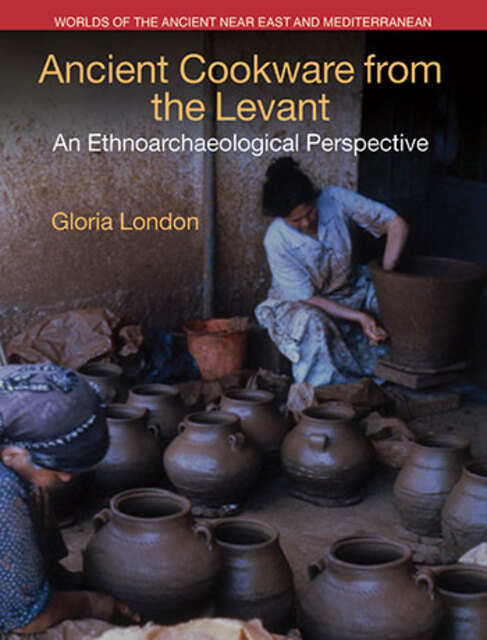London/Ancient Cookware, 19. Medieval Era Cookware

Full description
The Middle Islamic-era ceramics industry was divided between wheel-thrown vessels, some of which were glazed, and handmade coarse wares, plain, painted, slipped, or burnished. Deep globular pots never lost their prominence. HMGP and sugar pots joined the repertoire. Regardless of Fatimid, Crusader, or Mamluk rulers, local ceramic traditions prevailed. Crusader- era imports and exports demonstrate that cooking pots were traded across long distances. Beirut cookware reached coastal and inland sites. Mamluk-era texts reveal that household kitchens were rare, perhaps as in antiquity. During Ottoman times, emphasis moved further from glazed and imported wares to handmade pottery, especially for kitchenware and cookware, a trend that continued from Mamluk times. Handmade deep globular and shallow pots, casseroles, pans, trays, cooking bowls, and other forms were local products. In addition to deep cooking pots and milk containers, GGW wheel-thrown mortars or grinding bowls were used for grating and serving food. Despite the efficiency of glazed cookware, handmade pottery never ceased completely but was always practiced in rural locales, where people made what they needed. GGW pottery continues into the 21st century and provides a recent example of fragile, breakable wares traded long distance, across mountains and the deep Rift Valley.
- typeImage
- created on
- file formatjpg
- file size45 KB
- container titleAncient Cookware from the Levant: An Ethnoarchaeological Perspective
- creatorGloria London
- isbn9781781793855 (eBook)
- publisherEquinox Publishing Ltd.
- publisher placeSheffield, United Kingdom
- rights holderEquinox Publishing Ltd.
- series titleWorlds of the Ancient Near East and Mediterranean
- doi
We use cookies to analyze our traffic. Please decide if you are willing to accept cookies from our website. You can change this setting anytime in Privacy Settings.
